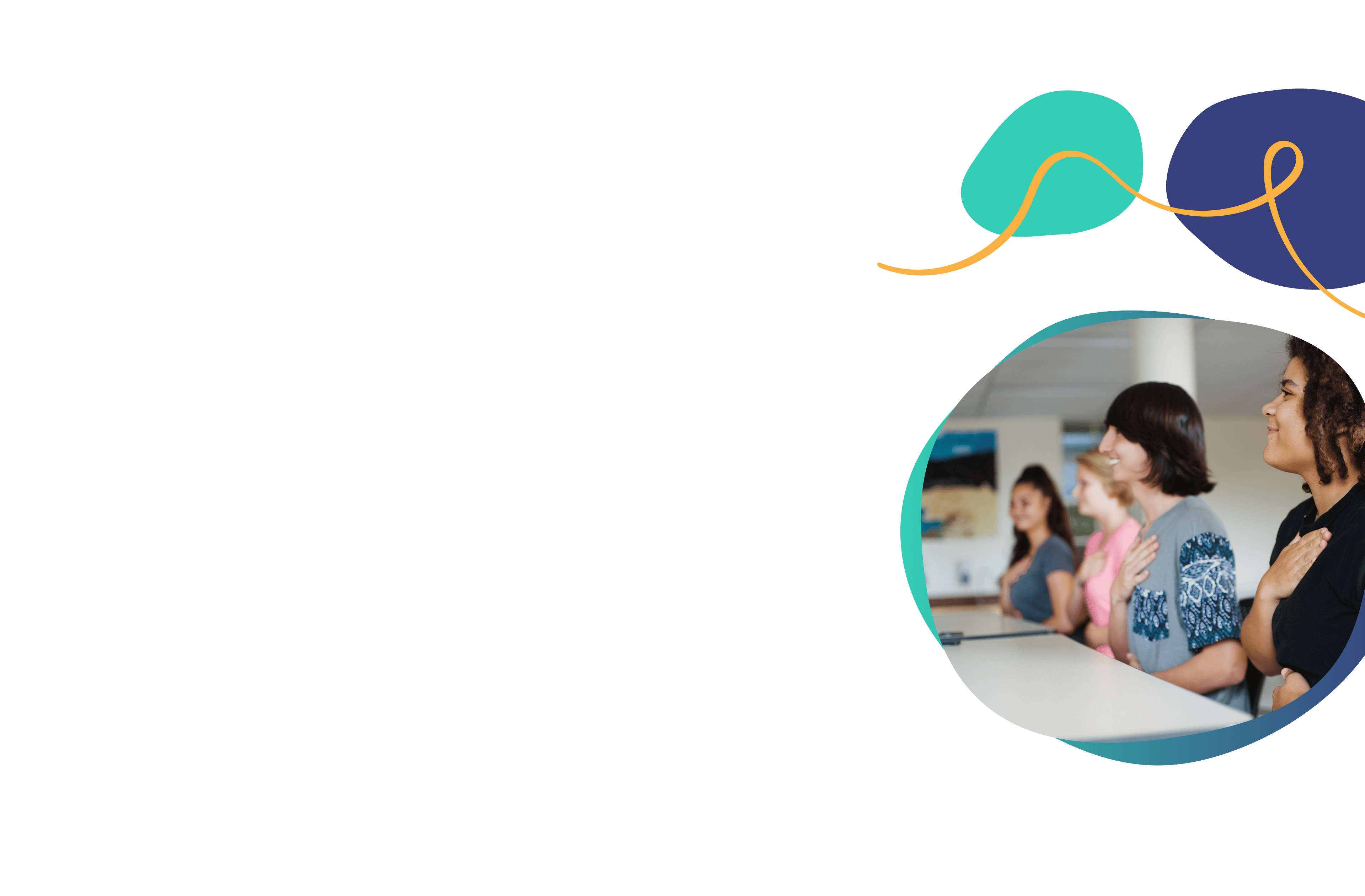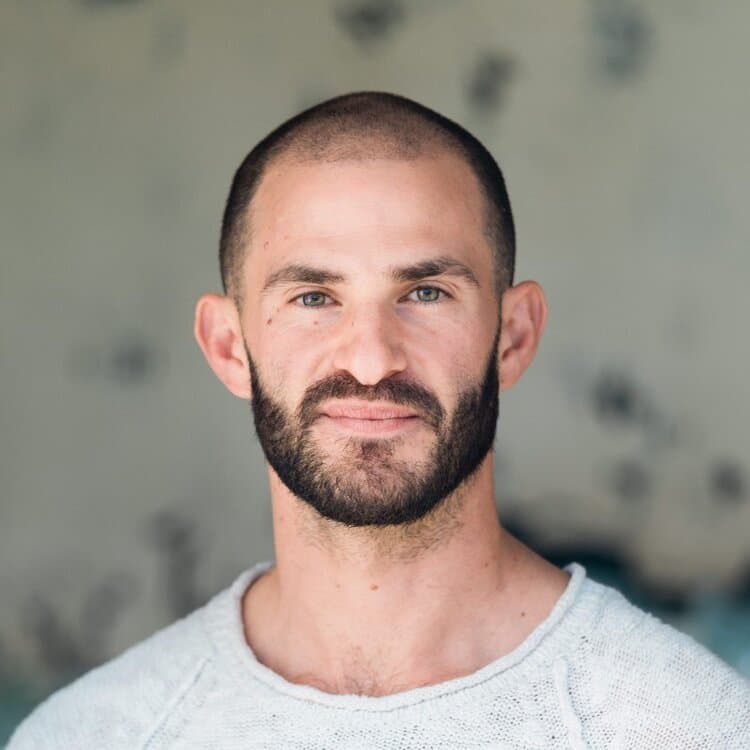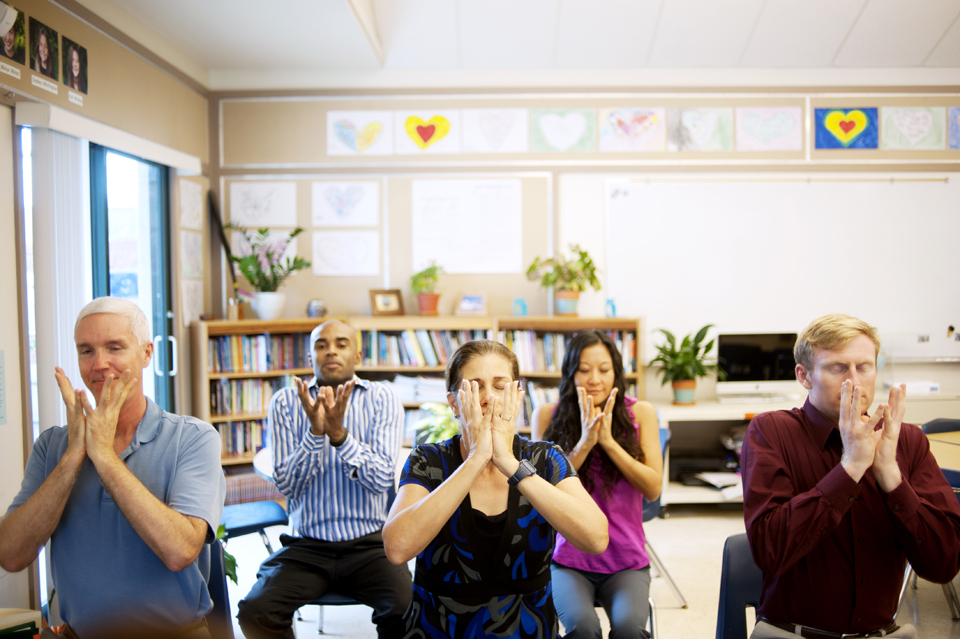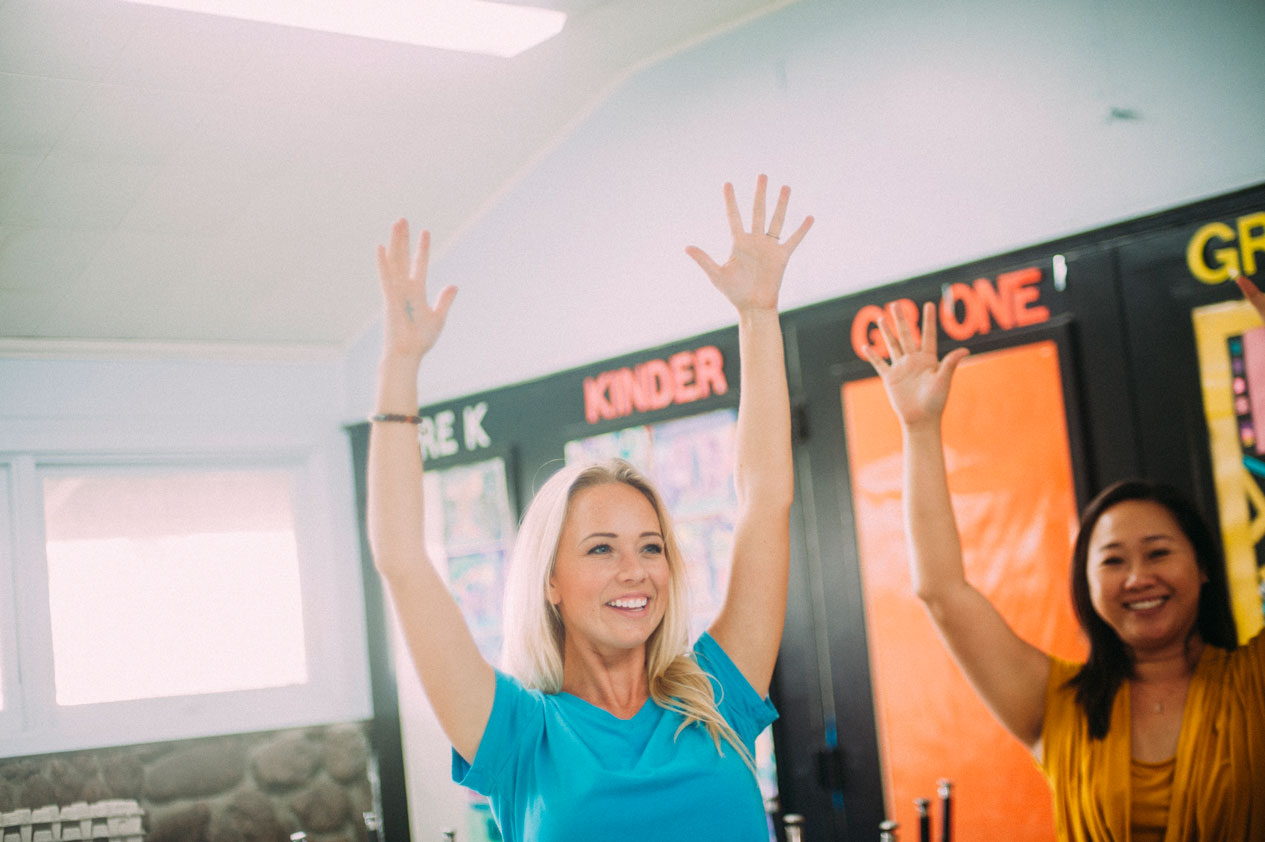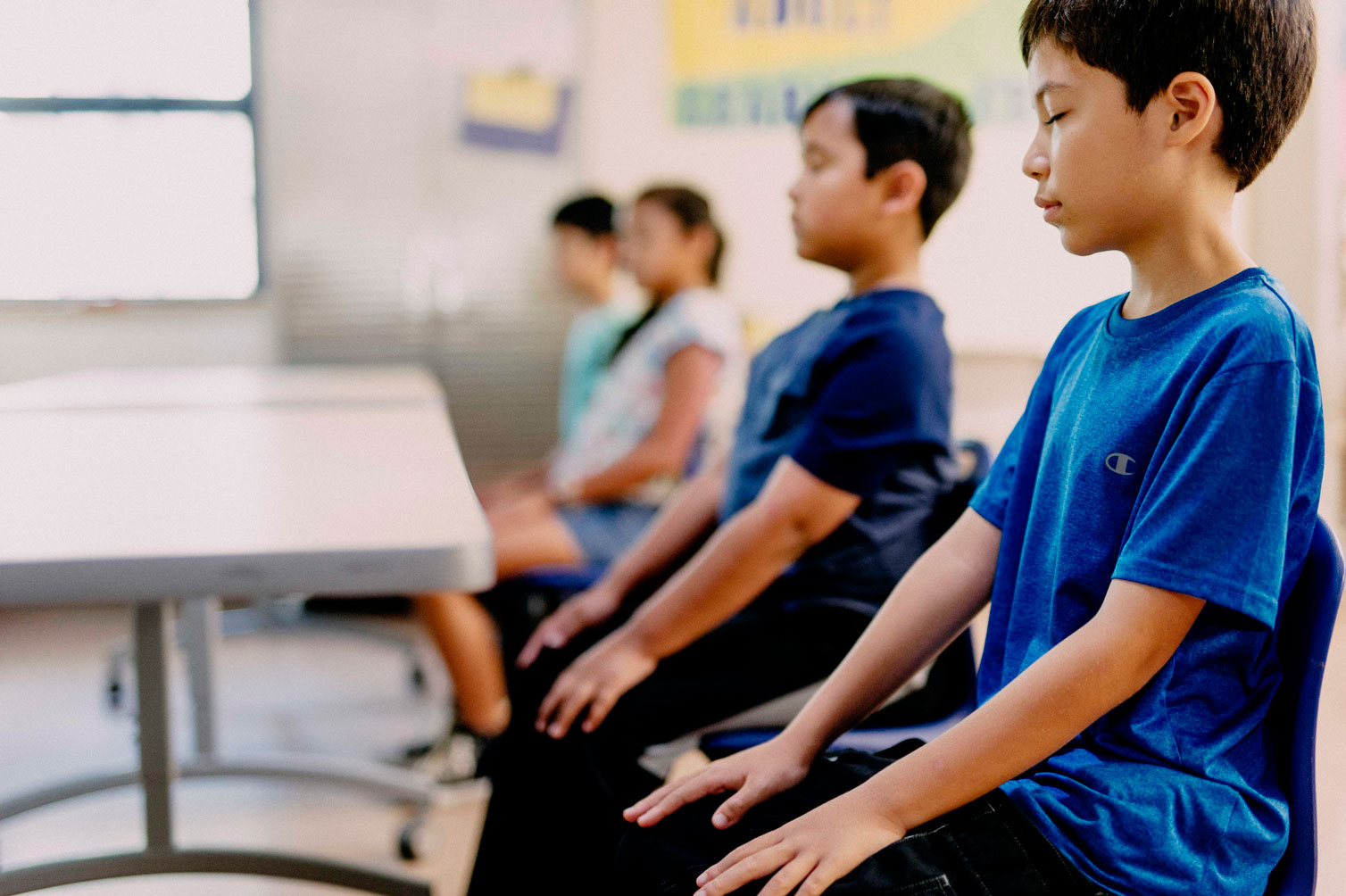Our human nervous systems evolved in social connection, and being in community with others is a core element of health, wellness, and education. Because our bodies and nervous systems evolved in community, they are constantly exchanging information with and influencing one another, whether we are aware of it or not. This constant exchange of information, and the impact it has on each person’s mental and emotional state, is called co-regulation—and it has major implications for teaching and learning in today’s world.
Co-regulation is prevalent in the classroom in many forms: verbal, physical, visual, emotional, and even electromagnetic. The phenomenon of co-regulation holds the key to why so many students fall short of social-emotional learning outcomes, and to how we can use a new type of science-backed curriculum and pedagogy to turn this around.
The Science of Co-Regulation
We’ve all experienced co-regulation when an angry person storms into a room, or when a joyful person laughs hysterically. The entire atmosphere changes, as do our heartbeat, posture, and mental-emotional state. Research demonstrates that emotional states transfer between people, a form of co-regulation called “interpersonal limbic regulation” in which one person transmits signals that can alter hormone levels, cardiovascular functions, sleep rhythms, even immune functions, inside the body of another (Goleman, D, Boyatzis, RE, & McKee A., 2001).
Scientists in the laboratory have measured the physiology—such as heart rate and posture—of two people sharing a good conversation. As the interaction begins, their bodies operate at different rhythms. But after 15 minutes, the physiological profiles of their bodies look remarkably similar, because they have co-regulated with one another. Another example of this is when feelings and expressions of love are able to trigger surges of oxytocin in others’ brains, creating affection and bonding.
Energetic Exchange
Research on co-regulation reveals that the exchange of information between nervous systems extends beyond physical, verbal, or even visual interaction. This is why “forcing a smile” or trying to “be positive” doesn’t work when there is actually dysregulation in the system. One way this happens is that our hearts give off measurable electromagnetic fields that communicate information. HeartMath, a spinout of the Stanford Mind-Body Lab, has verified this phenomenon in numerous studies, including having people sit on opposite sides of a cement wall and transmit emotional states to one another. If a cement wall can’t stop the transfer of emotional energy, then a forced smile certainly won’t do it : )
Research by Dr. Joe Dispenza on rooms of meditators hooked up to brain and heart sensors also illustrates the effects of co-regulation based on electromagnetic waves. Dispenza had 75 people sit in chairs facing away from the group without meditating, and then hundreds of other people in the room and meditate—and all 75 showed increased coherence between their brains and hearts, as well as increased synchronization with the meditators.
Co-Regulation and Effective SEL
So what does all this have to do with social-emotional learning? In current classrooms, the state of co-regulation is often in a negative spiral, sabotaging social-emotional and academic learning. However, by understanding the science of co-regulation, it is possible to learn tools to leverage the interconnection of our nervous systems for regulation and calmness instead of dysregulation.
In many cases, SEL is provided as one more piece of curriculum that educators must squeeze into an already overloaded schedule, in an already overwhelming environment. This is usually asked without providing these educators with the time and space to strengthen their own competencies in these areas, and without providing time and support to ensure they are able to actually model and embody them. When this is combined with the stresses of behavioral challenges, teacher shortages, and high-stakes testing, it often leads to educators’ nervous systems being dysregulated themselves while trying to teach the SEL curriculum. The sad irony is that, while educators’ are doing their best to teach self-regulation, they are often actually modeling dysregulation due to their own stress and lack of well-being.
Why Educator Wellness Matters
In light of the study of co-regulation, we can see why the current approach to SEL that doesn’t support educator well-being is a recipe for failure: despite educators’ best intentions and efforts, their own nervous systems are likely sabotaging their success. This is not the educators’ fault; in the vast majority of cases, they have not received the training, resources, and support they need to regulate themselves. They themselves are also being impacted by co-regulation, and having to deal with the dysregulation in students’ nervous systems that are being influenced in turn by their families, communities, and the pace of technological society as a whole. The overwhelming weight of all of the dysregulation in society then comes into the classroom, and our system expects a single, often isolated educator to be able to hold it, regulate it, and turn it around.
We need to honor the value and critical importance of the educator’s own well-being and self in the role that they play in ushering in the next generation.
Leveraging Co-Regulation for Effective SEL
At Breathe For Change, we believe that educators are heroes capable of doing the incredibly challenging and essential work of helping students learn to regulate their nervous systems–as long as we provide them the resources, support, and skills they require, and as long as we don’t expect them to do it alone. We believe that understanding the science of co-regulation and how it impacts learning environments, and adapting our curriculum and systems accordingly, is one of the most important elements necessary to transforming our education system.
To accomplish this, it is important to first and foremost focus on training, strategies, and community support that helps educators get their own nervous systems into a healthy, grounded state. Then, it is essential to provide strategies and pedagogical approaches–such as the hundreds of strategies we offer–that empower educators to facilitate social-emotional learning in a way that effectively models and conveys SEL competencies via the mechanisms through which co-regulation happens: verbal, visual, emotional, postural, and energetic. Last but not least, there must be ongoing educator-oriented support so that teachers are able to maintain their own state of regulation and wellness, and not get overwhelmed by and sucked into the dysregulation within the populations they serve.
Through providing training to more than 100,000 educators and impacting the lives of over 20,000,000 students, we have witnessed the power of what is possible in education when co-regulation is harnessed for effective learning. When educators anchor in positive, healthy nervous system states within a community of support, they can go into their classrooms and communities and serve as beacons of calm, focus, and love–enhancing social-emotional and academic outcomes for their learners and living out their passion of empowering the next generation.
